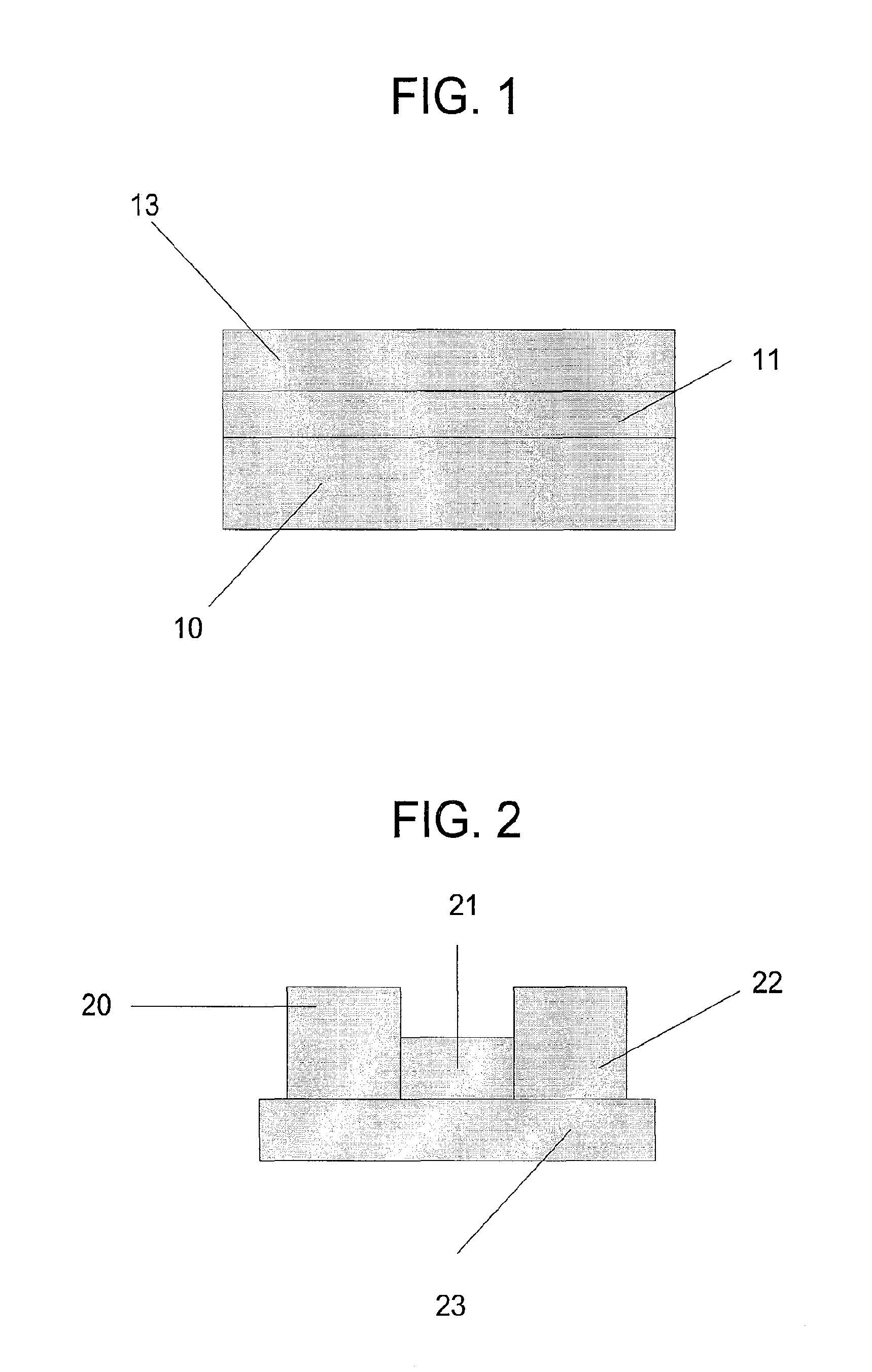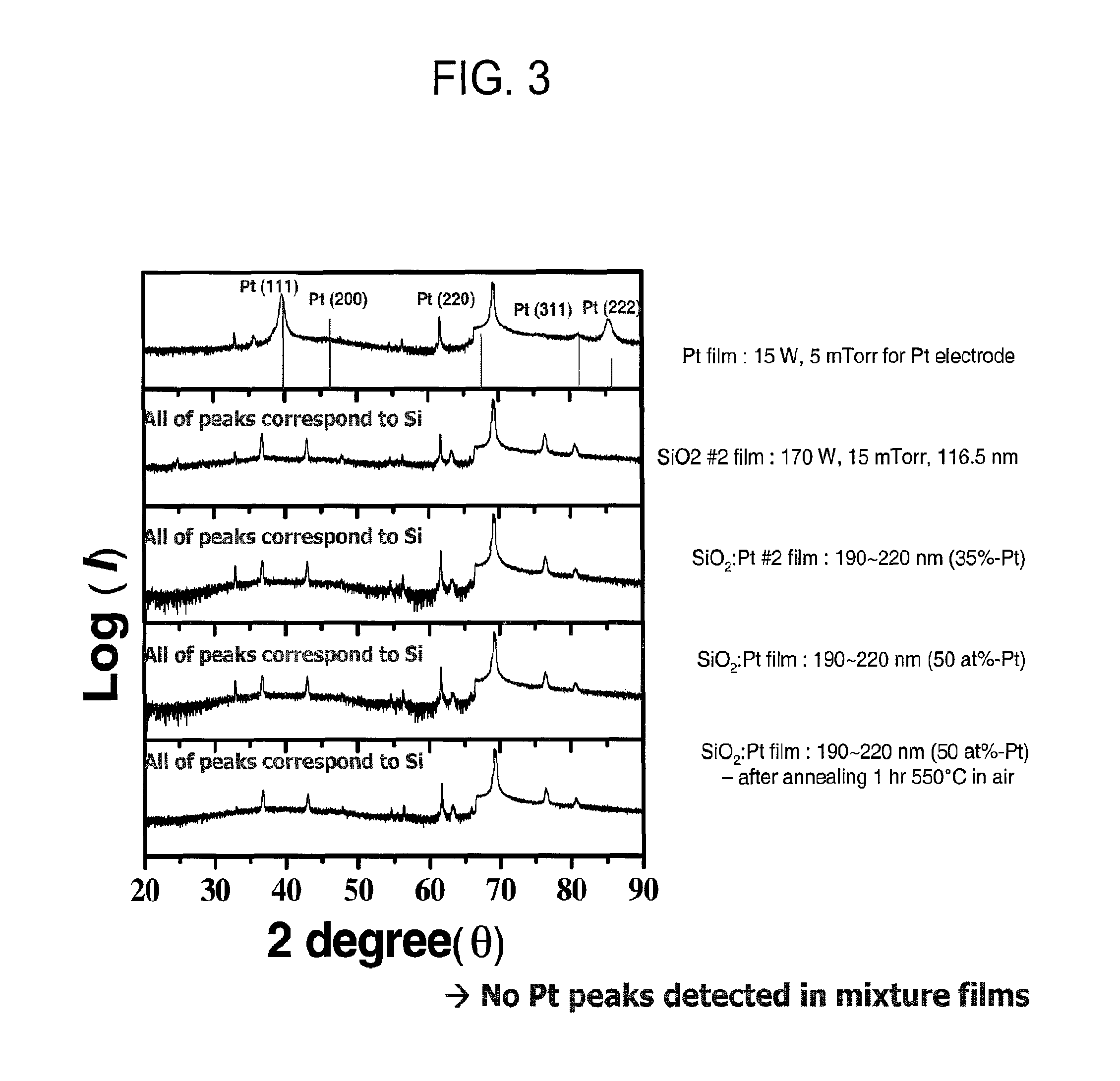Non-volatile resistance-switching thin film devices
a thin film, non-volatile technology, applied in semiconductor devices, digital storage, instruments, etc., can solve the problems of poor cycle fatigue performance, high power consumption of devices, and strong influence of switching cycle number, and achieve the effect of not losing switching time or stability
- Summary
- Abstract
- Description
- Claims
- Application Information
AI Technical Summary
Benefits of technology
Problems solved by technology
Method used
Image
Examples
examples
[0064]An example of a resistance-switching memory device is described using single crystal silicon n-type or p-type silicon with 100 or 110 orientations as the substrate, SrRuO3 as the bottom electrode, Pt as the top electrode, and SiO2 / Pt as the amorphous mixture layer. The various materials above do not share a common structure, and indeed the mixture layer can be deposited on unheated substrates. The test cells in the current example device had a diameter of 80 microns (“μm”).
[0065]The bottom electrode was deposited by pulse laser deposition using a KrF laser with laser energy of 200 mJ at a repetition frequency of 1-15 Hz in an O2 pressure of 0.01-100 mTorr. The film thickness, orientation and crystallinity were determined by a theta-2 theta diffractometer and a four circle x-ray diffractometer, both using a Cu Kα source. The surface morphology was observed by atomic force microscopy.
[0066]Because the silicon substrate may be covered by a layer of native oxide of an amorphous na...
PUM
 Login to View More
Login to View More Abstract
Description
Claims
Application Information
 Login to View More
Login to View More - R&D
- Intellectual Property
- Life Sciences
- Materials
- Tech Scout
- Unparalleled Data Quality
- Higher Quality Content
- 60% Fewer Hallucinations
Browse by: Latest US Patents, China's latest patents, Technical Efficacy Thesaurus, Application Domain, Technology Topic, Popular Technical Reports.
© 2025 PatSnap. All rights reserved.Legal|Privacy policy|Modern Slavery Act Transparency Statement|Sitemap|About US| Contact US: help@patsnap.com



